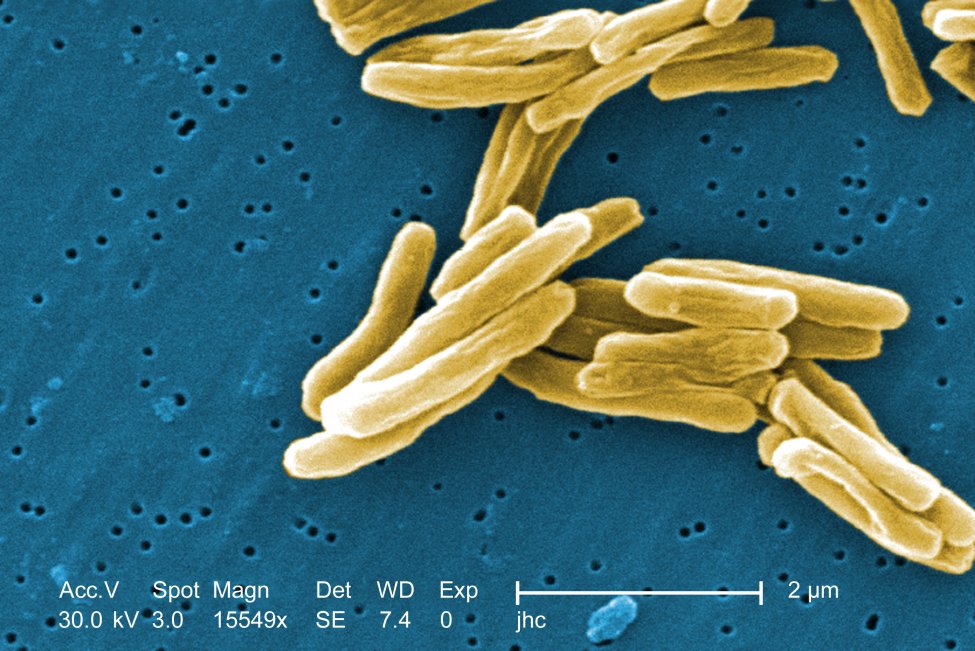The hepatitis drug telaprevir increased the potency of antibiotics in a recent study, lowering the antibiotic resistance of the bacteria that causes tuberculosis. Photo courtesy the U.S. Centers for Disease Control and Prevention
Nov. 23 (UPI) — The hepatitis C drug telaprevir can block the function of essential proteins in bacteria, which may allow to it be repurposed to limit antibiotic resistance, according to a study published Tuesday in Cell Chemical Biology.
Telaprevir, FDA-approved for hepatitis C, an infection that attacks the liver and leads to inflammation, works by blocking certain proteins in bacteria.
The proteins researchers want to block, called chaperones, play a critical role in cell function by folding proteins into cells. By blocking the right chaperones, bacteria may become less resistant to antibiotics.
“Telaprevir is the first previously clinically approved compound that has been shown to inhibit chaperone function in bacteria,” study senior author Tania Lupoli in the statement.
“Our research marks a vital step in developing small molecule chaperone inhibitors that can be used in bacteria to increase the power of antibiotics and slow down the evolution of antibiotic resistance,” said Lupoli, assistant professor of chemistry at New York University.
The researchers screened 25,000 compounds, including 1,300 approved medications, to identify small molecules that inhibit chaperones in Mycobacterium tuberculosis, the microbe that causes tuberculosis.
During the screening process, they found that telaprevir binds to mycobacterial chaperones and blocks their ability to fold proteins.
This made the mycobacteria more sensitive to antibiotics, including streptomycin, a commonly prescribed tuberculosis drug.
Telaprevir also lowered mycobacteria’s resistance against the first-line tuberculosis drug rifampicin.
An increasing number of infections, including tuberculosis, have become more difficult to treat as antibiotics become less effective, making reducing antibiotic resistance a major public health priority in the U.S. and around the world.
“In the future, we envision that small molecule chaperone inhibitor could be used in combination with antibiotics to enhance antibiotic potency and lower resistance,” Lupoli said.
“Our work contributes to a small but growing list of small molecules that block the function of chaperones and provides a promising avenue for ongoing study of the role that telaprevir and its analogs can play when administered with antibiotics,” Lupoli said.
In August, a separate study found that increased use of antibiotics in medicine and agriculture from the 1950s-1990s led to a rise in resistance of the drugs among wild Swedish brown bears.
Researchers also found a downward trend once national policies were designed to limit use of the medications.
Last year, the U.S. Centers for Disease Control and Prevention officials launched a “national action plan” to fight antibiotic-resistant infections, such as methicillin-resistant staphylococcus aureus, or MRSA. The bacteria have been linked to overuse of antibiotics.
In the United States, antibiotic-resistant bacteria were linked to an estimated 35,000 deaths per year, and estimated health costs of $4.8 billion per year, when the study was launched, according to the CDC.
